(This is a guest post by Antoni Sawicki aka Tenox)
In a recent few virtualization projects, such as QNX 1.2 (and demo disk), Interactive Unix (also older post) and Caldera (and older post), I have tried the 86Box emulator. Unlike typical hypervisors, 86Box emulates a wide variety of video and network cards. Everything I tried simply worked out of the box, so instantly fell in love. 86Box is now my daily drive for running old PC operating systems. I have decided to revisit some of previously half assed virtualization attempts with the awesome new emulator.
I have virtualized Dell Unix back in 2012 using Bochs and QEMU. Even with the community support, we have struggled to get a decent video resolution and had to resort to use of SLIP for networking. Today let me reintroduce Dell Unix more properly! With 1024×768, 256 colors video and proper networking using emula NIC.
The journey started with allsoft.img which is an image of the OS and all packages installed from a tape on Bochs. I have disabled a few services in /etc/rc2.d namely mouse daemon (mse), sendmail, uucp, lp, etc.
For X Window I have edited /usr/lib/X11/Xconfig, enabled serial mouse (Microsoft) and 1024×768 mode. I have used Tseng ET4000AX VGA which is recognized by Xmach server. This allowed X / xinit to run correctly. However for startx to work you also need to edit /usr/lib/X11/xinit/xserverrc, as it seems to be using slightly different configuration. For graphical login you can add something like x:3:respawn:/usr/bin/X11/xdm -nodaemon to /etc/inittab. However I have noticed that when ran from init, xdm seem not to pick up the Dell customized config files. Perhaps rc startup script should be created instead.
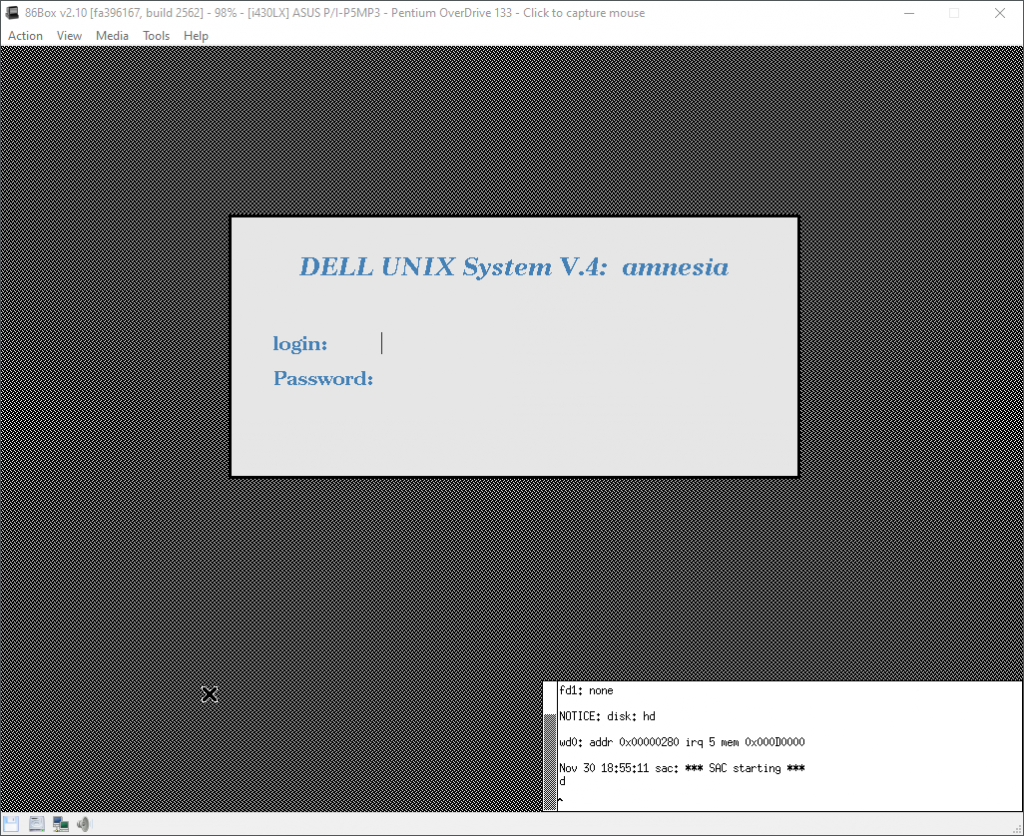
As a final note on X, the system has virtual consoles. Like other SVR4 you access them by pressing SYSRQ and F keys. F1 is a text mode console, F2 is Xserver. This is my Dell Unix hero shot:
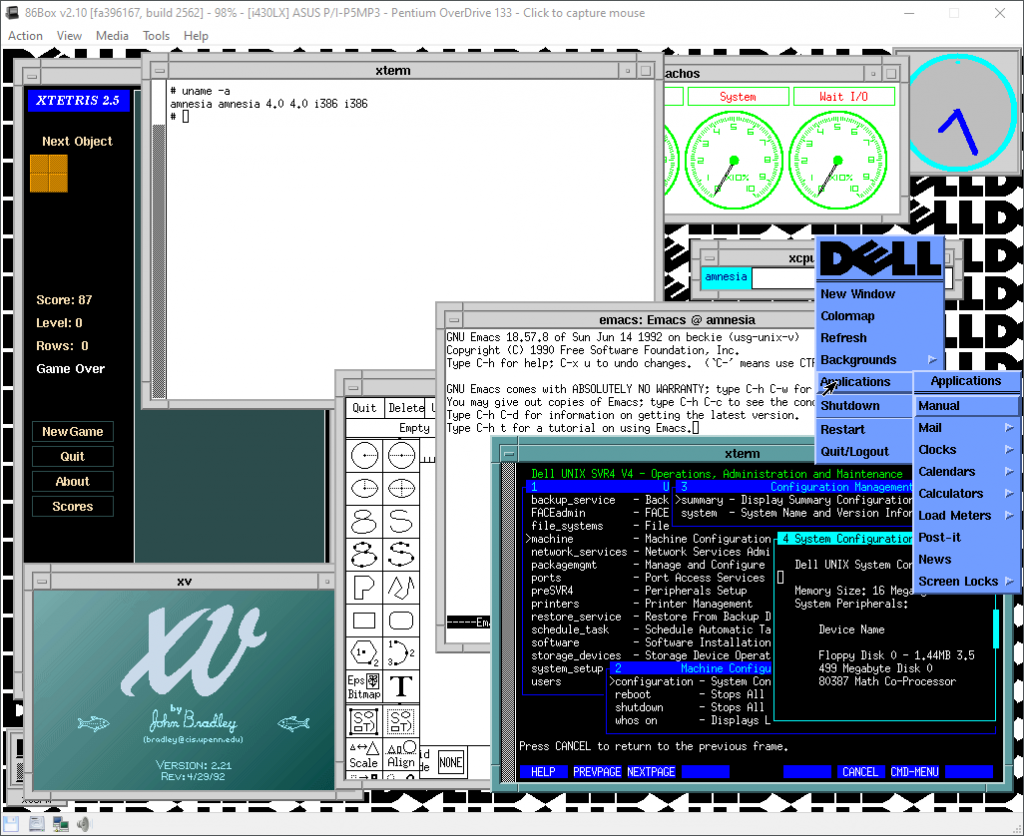
Networking was even easier. Dell Unix supports WD8003 and 3C503 NICs. Firstly I wanted to try the WD. In /etc/conf/pack.d/wdn/space.c you can find the predefined hardware probes. I have picked one of supported modes and the card was detected on subsequent reboot. That’s it. No need for kernel rebuild or any configuration. I have not tried 3C503 yet, but if you want the driver for it is named ie6. For TCP/IP configuration you set your IP address in /etc/hosts and gateway in /etc/inet/rc.inet file.
I was able to quickly compile Mosaic, which curiously had Makefile settings for Dell Unix. Took it for a spin on the web with help of WRP:
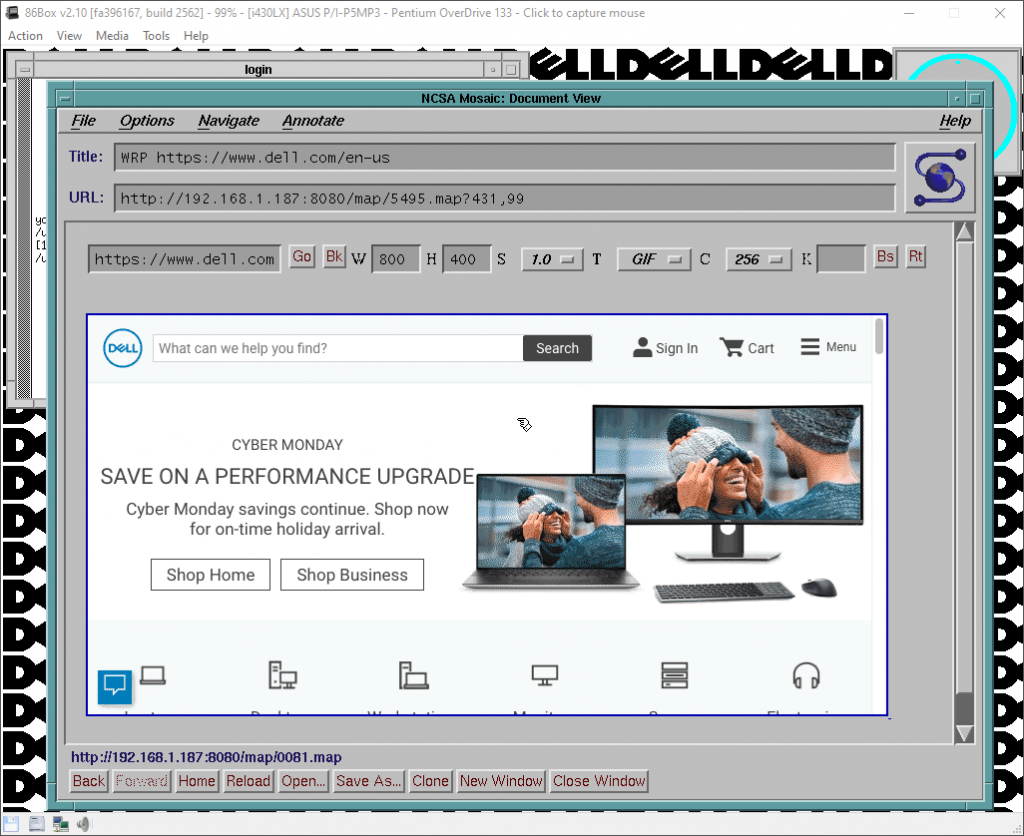
One could probably want to compile more recent version of Mosaic with PNG support or maybe some more recent browser all together.
The system comes with a bunch of open source software in /usr/dell, however suprisingly there is no bash or even gzip. I have compiled some essentials. They are available here and as a /usr/local tarball.
For the lazy, as usual you can get a complete os image for 86Box here. Make sure to attach pcap to your local network interface and set IP address / gateway / dns server accordingly.
If you port some cool software or find any interesting gems in Dell Unix please comment!
Have fun with virtualization!
Update: I been looking at contents of various distribution media for Dell Unix that have surfaced here and there. On a DAT tape I bought on eBay a few years back I found this file:
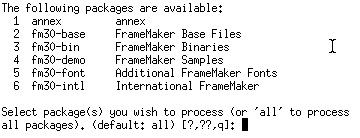
Whoa! Of course I want to install all of it! This is how FrameMaker 3.0 looks on Dell Unix:
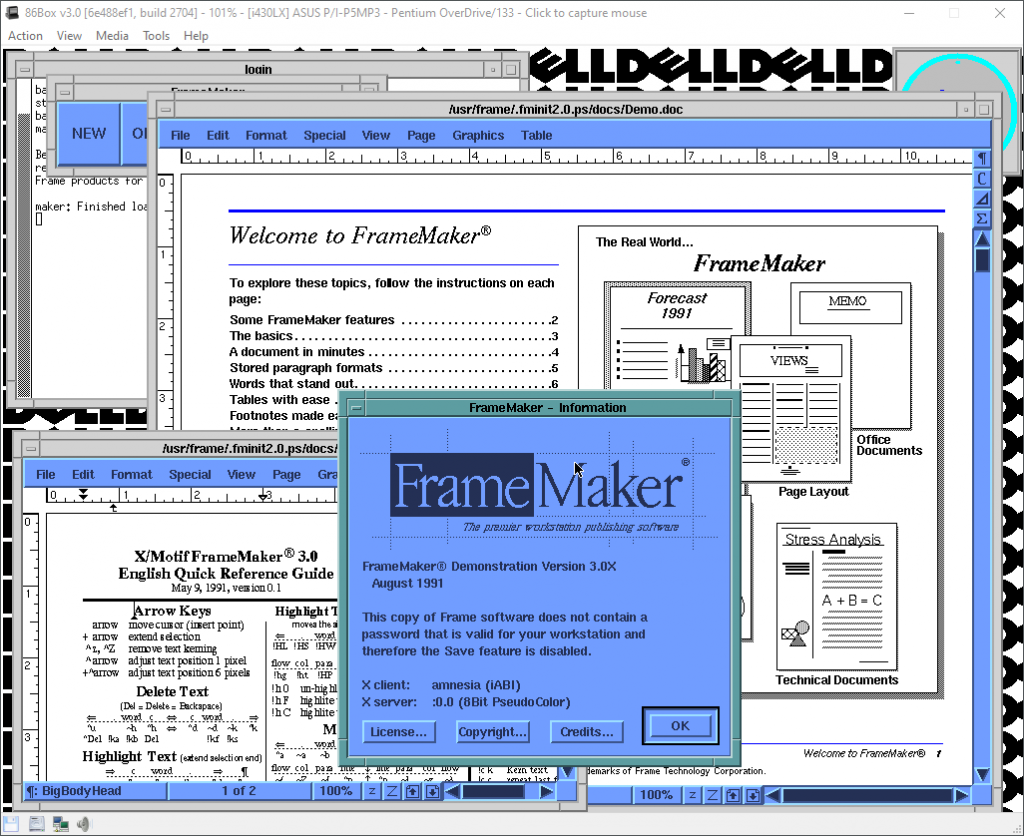
I have updated the disk image for 86Box to have this included. You can run demo mode of FrameMaker by executing /usr/frame/bin/demomaker. I also imagine that this can be installed on pretty much any x86 SVR4 and above, maybe even Linux. If anyone has a license code / serial number please let me know!

“As everything I did simply worked out of the box I instantly fell in love. Truly awesome 86Box is now my daily drive for running old PC operating systems.”
Unfortunately… Still no UART/Serial IO! You can’t debug old stuff like that! :-/.
Dev team member here. I’ll try to do serial after the v3.0 release we’re in the middle of sorting out. I’ve needed to use WinDbg in 86Box more than once, for which I wrote a nasty hackjob on top of the existing serial mouse code.
It’s great to see 86box get some much-deserved love. I’ve been using for it for quite some time -a couple of years, I believe. So far the only thing I’ve thrown at it that hasn’t quite worked has been 386BSD, but even that can kind of sort of work by using the 1.0 github version and booting a small kernel with boot in freedos.
I haven’t done a lot of other Unices in it yet, but it’s let me use OS/2 warp almost flawlessly.
Being lazy, I’m definitely taking you up on the 86box image -thanks for providing it!
I have several different FrameMaker keys and unfortunately none of them work with this version. I tried 2.0d for NeXT, 3.2 for NeXT, and 3.0 for Windows and none of those keys work. It looks like FrameMaker used a different format for each release. All of those listed have different numbers of digits and formats. Unlike say, Mathematica where most of the early versions used the same key format.
Hello,
First, sorry mi english is not very good.
I want to install Unix SVR4, i have CDs to install.
But ….. I dont have the hardware (CPU processor) to be able to do it.
The Dell´s server in the office is an Power Edge T410 an NCR 3489, in the Dell I almost do not have problems, but the NCR is giving me HW errors (I think the controller Ami Trend died!!!!).
I would like to know how they managed to virtualize this UNIX, is it possible to show me or give me a light of how to do it (which HW and SW use) ???
The exact process of virtualization was outlined in an earlier article from 2012 here https://virtuallyfun.com/wordpress/2012/03/20/dell-unix-lives-again/
Note that I don’t think you can install Dell Unix on a modern Dell Power Edge.
I have a Power Edge T410 operative with Unix working fine!!!!
I have too Install CD´s, but is very difficult found operative hardware Unix compatible in this moment.
I don´t have experience in make virtualization, and the NCR Server is not working.
I would like some help to make Unix Virtual Machine.
So hope answers!!!!!
Just curious but what would it take to get this installed on a real machine? I have a Dell 333s/L 386 from 1992, the same year as this release, and it would be awesome to be able to boot this up on it.
To be honest It would probably be easier to install it on a physical machine than virtualized. If you don’t have a tape drive in your machine you could use my method with using second hard disk for the install media. Perhaps use CF2IDE card or something like that.
Thanks, I’ll look into it. 🙂
Hi can you fix the broken link? Because when I download the image file I get an error where it says the file was not found in the server.
Hello sir, can you please provide full instructions on how to run the dellunix.img file and start the unix system with 86box? thank you
What is the CAD software you have in the second picture under neath both Emacs and XTerm,
Thanks
Looks like Xfig.
Weird, off-topic question: Anyone happen to know why Dell Unix dies with a triple-fault under VirtualBox on Core 2 systems?
But only with > 16MB of guest RAM; with 16MB of guest RAM the kernel boots and works fine (?)
it’ll be related to ISA DMA from the sounds of it. Many old 386 stuff lived in the 286 24bit address space, and didn’t take into consideration the memory layout as who on earth could afford more than 16MB of RAM back then, let alone fit it into their computer?!
old 386 BSD & Linux also suffered the same issues with DMA. You could try removing the floppy controller since it’s the larger source of DMA issues, along with forcing IDE into PIO mode as well, which will usually work up to the next big limit of 64MB.
I had the same idea, because of the virtualized ISA devices involved, but the thing is, the exact same configuration works on my various other Core i’s and AMD systems, the only systems that give the triple fault are all of the Core 2’s I’ve tested (p9600, t9600, p7550) — there must be something special about them that hits this problem
must be the jit? Try 386/486 with no dynamic recompilation?
The only feature that comes to my mind that Nehalem and above has and Core 2 generation lack is VT-x extension EPT (Extended Page Tables) for SLAT, which allows Nehalem to virtualize “unrestricted guest”.
https://forums.virtualbox.org/viewtopic.php?t=59379
neozeed: not 86box; 86box goes as fast as it goes, but in exchange even its dynrec is too high level for host cpu compatibility to matter much
zir blazer: ah, ok. I didn’t realize the significance of “unrestricted execution” and the sea change in how virtualbox worked with different hw virt versions; there is tons of guest instruction behaviour implemented in the hypervisor that it touches on and who can say what small difference has a knock-on
effect that leads to the crash
This is exactly what I was looking for, been playing with Dell UNIX for a few hours and am struggling to get X running. Its the first time I’ve encountered such an old version of X and this page has exactly what I need.
Also, its better to just create /root, edit /etc/passwd and change roots home to /root then copy all the files in /usr/X4/init over to /root appending a dot to each. Then you can edit the .xinitrc and .xserverrc files locally without messing with the system version.
I can confirm that Nano v1.0.9 builds and runs fine too.
Out of curiosity, have you tried 00-5-01-01-3-24F8C ?